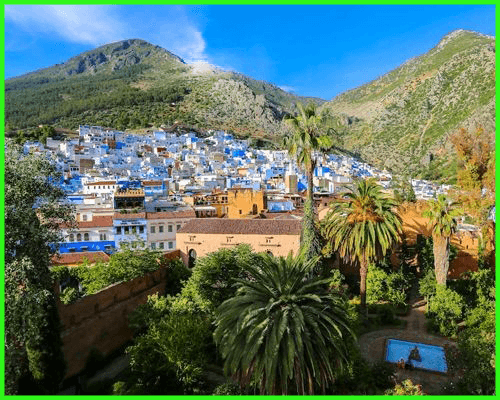Best Time to Visit: A Seasonal Travel Guide
The best time to visit Morocco is during spring (March to May) and autumn (September to November). These seasons bring mild temperatures, ideal for exploring cities and nature. You’ll enjoy clear skies, fewer crowds, and comfortable travel conditions.
Spring is especially beautiful, with blooming landscapes and fresh mountain air. It’s a perfect time for hiking in the Atlas Mountains or visiting the Sahara. The weather is warm but not too hot, making it pleasant for all kinds of travel.
Autumn offers similar advantages, with cooler temperatures after the summer heat. It’s a great time for photography, cultural festivals, and desert trips. The golden light and quieter streets create a relaxed atmosphere.
Summer (June to August) can be very hot, especially inland and in the desert. However, coastal cities like Essaouira and Agadir stay cooler and more comfortable. If you visit during this time, stick to the coast or mountains.
Winter (December to February) is cooler, with snow in the mountains and chilly desert nights. It’s a peaceful time with fewer tourists and lower prices. You can also enjoy activities like skiing or surfing depending on the region.
In summary, this travel guide to Morocco recommends spring or autumn as the ideal seasons. You’ll experience the country at its most vibrant, comfortable, and accessible. Whether it’s city life, nature, or desert adventur these months have it all.
Best Time to Visit the Sahara Desert – Travel Guide to Morocco
The best time to visit the Sahara Desert is in spring (March to May) or autumn (September to November). During these seasons, the weather is warm but not too hot, making it ideal for camel treks and desert camping. Nights are cooler, and the skies are usually clear—perfect for stargazing.
Best Time to Watch the Stars
The best time to watch the stars in Morocco is during spring (March to May) and autumn (September to November), when the skies are clearest and the air is cool and dry. For the best stargazing experience, head to the Sahara Desert or remote mountain areas away from city lights.
The ideal time of day is from 10:00 PM to 2:00 AM, when the sky is darkest and the stars are most visible—especially during a new moon phase. Plan your outing on a clear night with no clouds or wind for the most breathtaking views.
Where You’ll Need a Local Guide for Sightseeing – Travel Guide to Morocco
When sightseeing in Morocco, hiring a local guide is especially helpful in cities like Fes and Marrakech. Check our Trips, In Fes, the sprawling, winding medina can be confusing to navigate, and a guide can help you discover hidden corners and explain the city’s deep history. In Marrakech, a local guide will lead you through the busy souks and famous landmarks, ensuring you don’t miss any must-see spots while sharing fascinating stories about the culture and traditions.
Wondering What to Do in the Sahara Desert? – Travel Guide to Morocco
This is what we will do in the Sahara Desert for one full day. First of all, you will spend one night in the camp. After already riding camels to get there, you will be in the middle of the Sahara Desert, surrounded by the big sand dunes of Erg Chebbi. You’ll enjoy a tasty dinner cooked by local Berber women—dishes like tagine, couscous, and other traditional courses.
After dinner, the guys from the camp start a show—or we can call it a party—where you’ll listen to Berber music that was traditionally played at their weddings. From there, you can wander around the sand dunes and watch the starry sky, and if the night is clear, you’ll even see the Milky Way. Then you’ll sleep in your comfortable tent.
In the morning, it’s highly recommended to wake up early for the sunrise—it will be a magical view. The camp staff will let you know when and where to go to see it. In addition, you’ll find a sandboard at the camp if you want a bit of fun, especially great for kids and teenagers.
After breakfast, an off-road tour will begin. First, you’ll visit a nomad family and really learn a lesson in how strong Berber people are, living in such a harsh environment. Then, continuing off-road, you’ll reach an old kohl mine that was founded during colonial times. You’ll also visit an abandoned village where the local miners used to live. Of course, your guide will explain everything and share some history—because in the desert, you’ll definitely need a guide with a 4×4 SUV.
After that, you’ll visit a village of Sub-Saharan people (African, dark-skinned communities) and listen to their traditional music called Gnawa. In the same village, you’ll also enjoy a special local meal known as Berber pizza. Then, you’ll visit another local oasis before heading back to your hotel.
If you’ve booked a hotel in the area, most of them have a swimming pool, perfect for relaxing. During sunset, you can also arrange a 1-hour quad or buggy ride to finish the day with some adventure.


